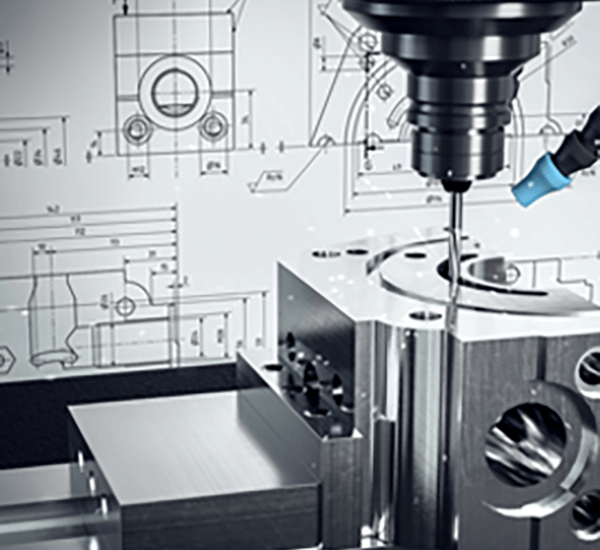
Securing exact surface quality on a machined component is vital.
- Engineering annotations specify detailed surface expectations for components
- Many specifications reference Ra, an average roughness metric, for surface measurement
- Comprehending finish specifications is crucial to meet operational standards
- Clear finish specification affects lubrication behavior, sliding resistance, and lifespan
- Right interpretation of surface notes ensures attainment of the sought condition
CNC Machining — Precision Engineering Explained

Robotic-assisted machining defines a modern manufacturing practice through automated code the equipment produces detailed patterns with tight tolerances.
- Computer-driven machining creates reliable parts from assorted materials
- Broad CNC applicability benefits industries like aerospace, automotive, and healthcare
- CNC machining delivers exceptional repeatability ensuring identical parts across production runs
From initial prototype stages to mass-manufacture CNC machining supports modern production workflows
Comprehending CNC Machine Specifications
Decoding CNC machine specifications can feel daunting at first glance
In contrast, measured learning and order help you traverse technical specifications
Set out by finding key metrics: spindle speed, feed settings, positional accuracy, work envelope, controller
All attributes together shape the system’s production performance.
As an example, increased spindle rpm favors soft alloys and higher feed favors throughput.
Comprehending those interactions assists in picking the proper CNC for tasks
Always examine producer technical literature in detail.
Producer documentation frequently delivers important notes and clarifies terminology
What is a CNC Machine? A Comprehensive Guide
Numerical-controlled machines are computer-guided systems for accurate automated manufacturing across substrates They function by reading numerical G-code commands that drive cutting heads and actuators.
- Common CNC classes include milling machines, turning lathes, routing systems, plasma cutters
- CNC machining processes are highly versatile and can be used to work with a wide range of materials including metals plastics wood and composites
- Also CNC equipment offers quick turn prototyping and low-volume runs for innovators and labs
Computer Numerical Control Machines: An Overview
CNC machines represent a remarkable fusion of mechanical precision and sophisticated software control These versatile tools utilize computer programming to automatically manufacture a wide range of parts from simple components to complex assemblies Primary notion maps digital geometry to tangible fabricated pieces.
- CNC machining
- Programmed manufacturing process
It uses accurate motion sequences commanded by the controller Production personnel configure feeds and speeds, monitor cycles, and guarantee output quality.
Significance of Surface Finish in CNC
Realizing specified surface quality in machining is vital It strongly influences part functionality and visual appeal Substrate properties, machining variables, and post-process methods shape surface outcome.
Fine finishes raise resilience whereas rough profiles can restrict performance CNC machining processes offer a wide range of tools and techniques to achieve the specific surface finish for different applications.
- For instance varying cutting insert shapes |cermet inserts|cutting speeds to achieve a desired surface finish
- Furthermore secondary operations such as polishing, grinding, or sanding enhance finish
Understanding parameter influences helps attain the desired surface quality.
CNC Overview: From Use to Application
It constitutes a high-precision manufacturing approach using programmed machine tools to form parts from many materials They adhere to programmed code to reproduce complex geometries with repeatable accuracy Awareness of G-code, tooling, and machine operation aids successful production
Applications of CNC machining are incredibly diverse spanning numerous industries such as aerospace automotive manufacturing From intricate parts for aircraft engines to precision molds for plastic injection CNC machines have become indispensable tools for producing high-quality products with complex geometries
Surface Finish Standards for CNC Machining
Exact finish callout is important for CNC component manufacturing It ensures that the final product meets the requirements for function and aesthetics Surface finish callouts are typically represented using the system known as the Surface Roughness Ra The value, shown in µm or inches, quantifies mean surface irregularity height.
Factor in desired smoothness and the component’s functional purpose when setting finish callouts

For instance a smooth surface finish might be preferred for parts that require tight tolerances or precise alignment
More pronounced surface profiles help applications relying on friction or traction
Use explicit finish instructions on design documents to convey the surface requirement Include both the Ra value along with any additional instructions such as machining processes or surface treatments.
Recall that well-defined roughness notes help ensure production success
Types of CNC Machines and Their Capabilities
Machine shops deploy varied CNC equipment tailored to many distinct production tasks They pair with CAD software to translate designs into cutting commands for precise fabrication.
- Boring and drilling equipment generate accurate holes and internal features
- Profiling routers cut complex outlines usually in softer materials
- Laser, waterjet, and plasma technologies suit intricate shapes and delicate workpieces
Choosing the right CNC depends on production goals material type and required accuracy Unique machine capabilities support varied industry needs such as automotive, aerospace, and medical.
Attaining Superior Surface Quality via CNC
Securing excellent surface finish plays a key role in production and CNC methods enable that outcome Using accurate feed and speed selection plus optimized tool geometry technicians refine cutting action to reduce surface flaws Plus durable cutting materials and appropriate coolant control boost finish quality Optimized cutting plans and meticulous setup procedures help achieve premium finishing.
Obtaining Surface Quality via CNC Code
Programming skills that affect finish are critical for reaching surface goals Machining parameter combos such as feed, rpm, and tool geometry set the surface characteristics Attentive parameter configuration alongside good coolant practice leads to superior surfaces.
- Additionally routine tool checks and upkeep maintain consistent finish quality Furthermore regular tool maintenance and inspection are essential for ensuring a consistent and high-quality surface finish cnc process over time Additionally routine tool checks and upkeep maintain consistent finish quality
- To enhance finish consider workpiece material, roughness targets and use case
- Using CAM simulation lets you preview and tweak toolpaths to lower defect risk
- Also ongoing tool care and inspection support sustained finish reliability
